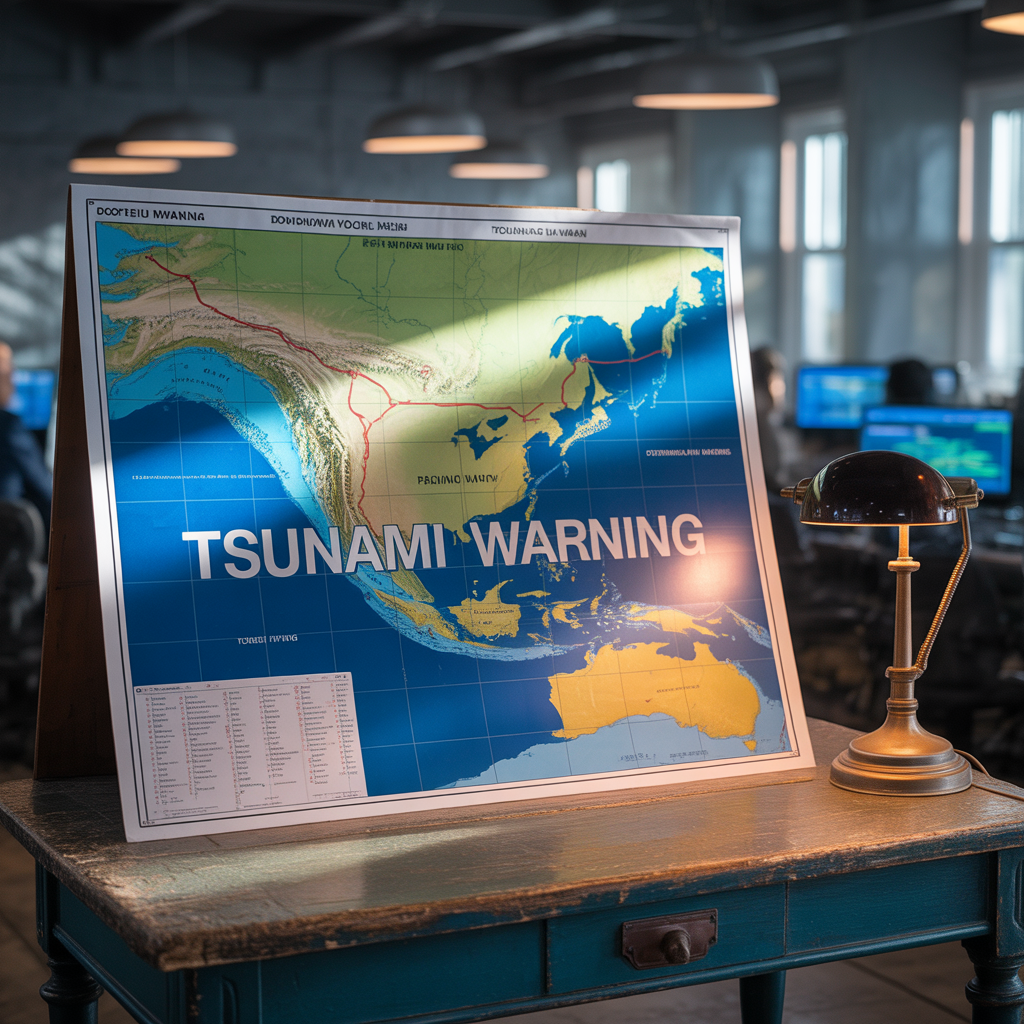Pacific Tremor Highlights Importance of Global Preparedness
A powerful earthquake off Kamchatka region struck on July 30, 2025, with a magnitude of 8.7, prompting tsunami alerts across the Pacific. The quake, one of the strongest recorded in the area in decades, originated near the eastern coast of Russia and set off warnings in Japan, Hawaii, and along the U.S. West Coast. The quake occurred at a shallow depth of 19.3 km and was located about 140 km southeast of Petropavlovsk‑Kamchatsky, prompting evacuation orders in Japan, Hawaii, Alaska, and Russia (Reuters).
Seismological Details and the Epicentre
The United States Geological Survey (USGS) initially registered the quake as magnitude 8.0 but later revised it to 8.7, placing the epicentre within Avacha Bay. Kamchatka Governor Vladimir Solodov described it as the strongest earthquake in decades, with local magnitude estimates near 8.8. In the hour following the main tremor, about eight aftershocks above magnitude 5 were recorded, with experts warning of further tremors possibly reaching 7.5 in the coming weeks (Reuters, AA).
Tsunami Alerts and Coastal Responses

The Pacific Tsunami Warning Center issued watches and warnings across multiple regions:
- Kamchatka and Kuril Islands in Russia
- Coastal zones of Japan (Hokkaido to Kyushu)
- Hawaii, Alaska, Guam, Micronesia, and the U.S. West Coast
Japan’s Meteorological Agency warned of tsunami waves up to 3 m, ordering evacuations along coastal areas. Hawaii authorities issued alerts, urging residents in Oahu and other islands to move to higher ground as sirens sounded statewide (The Guardian, NDTV).
In Kamchatka, reported wave heights reached 3–4 m near the coast. Infrastructure in Petropavlovsk‑Kamchatsky—including a kindergarten—sustained damage, though no fatalities were reported. Minor injuries occurred during evacuations and emergency responses.
Historical Perspective: Kamchatka’s Seismic Legacy
The 2025 quake is considered the strongest in the region since the 1952 Severo‑Kurilsk event (magnitude 9.0), which generated tsunami waves over 9 m, impacting Hawaii significantly (Wikipedia). Kamchatka falls along the Pacific Ring of Fire, a tectonically active zone prone to major subduction-zone quakes, as seen in past events in 1923 and 1737 (Wikipedia, Wikipedia).
Disaster Response: Measures and Impact
Russian authorities declared a state of emergency and initiated rapid response measures. Emergency shelters opened, and schools and public venues were temporarily closed. In Severo‑Kurilsk, evacuations were orderly and successful, with no major harm reported. Regional Minister Sergei Lebedev cited tsunami heights near 32 cm in some areas but emphasized the need for vigilance (AA, India Today NE).
Global Response and Tsunami Preparedness
Pacific countries including Japan, Chile, Peru, Ecuador, Australia, and the Solomon Islands issued tsunami warnings or advisories. The U.S. National Weather Service extended watches along California, Oregon, and Washington’s coasts. Japan activated emergency services, halted coastal trains, and recorded waves between 30 cm and 60 cm at more than 16 monitoring sites (The Guardian, WSJ).
India’s Stand: No Threat to Indian Shores
India’s Tsunami Early Warning Centre (INCOIS‑ITEWC) received early seismic data and confirmed no tsunami threat to India or the Indian Ocean region. This assurance, issued on 30 July, followed model-based simulations and eliminated the need for further alerts unless new seismic data emerged (Tribune India).
Key Takeaways from the Disaster Response
| Area | Details |
|---|---|
| Magnitude & Depth | 8.7 m (quake) at ~19.3 km depth |
| Epicentre Location | ~140 km southeast of Petropavlovsk‑Kamchatsky |
| Regions Affected | Kamchatka, Japan, Hawaii, Alaska, U.S. West Coast |
| Tsunami Waves | 3–4 m in Kamchatka; 30–60 cm observed in Japan |
| Casualties | No confirmed deaths; some injuries and coastal damage |
| Aftershocks Recorded | Eight above magnitude 5; further expected up to 7.5 |
| India’s Status | No impact projected; no tsunami threat to Indian Ocean |
Preparing for Aftershocks and Future Risks
Geologists expect possible aftershocks above magnitude 5 in the coming weeks. Authorities advise residents in affected zones to remain alert and follow guidelines. The quake underscores the continuing importance of investment in early warning systems and public education—a reminder that even remote seismic events can have wide-reaching consequences.
Lessons in Preparedness and Resilience
The 8.7 magnitude earthquake off Russia’s Kamchatka coast has underscored the critical importance of disaster preparedness and coordinated emergency response. Despite the force of the tremor and instances of coastal flooding, timely evacuations and the swift action of local authorities helped prevent casualties. Early tsunami warnings across the Pacific, backed by well-rehearsed protocols, played a key role in reducing potential harm. As aftershocks continue and monitoring agencies remain on alert, the event highlights the value of robust infrastructure, international cooperation, and public readiness in managing natural disasters. This earthquake stands as a reminder that regions along active fault lines must remain vigilant and continuously improve their resilience against future seismic threats.




